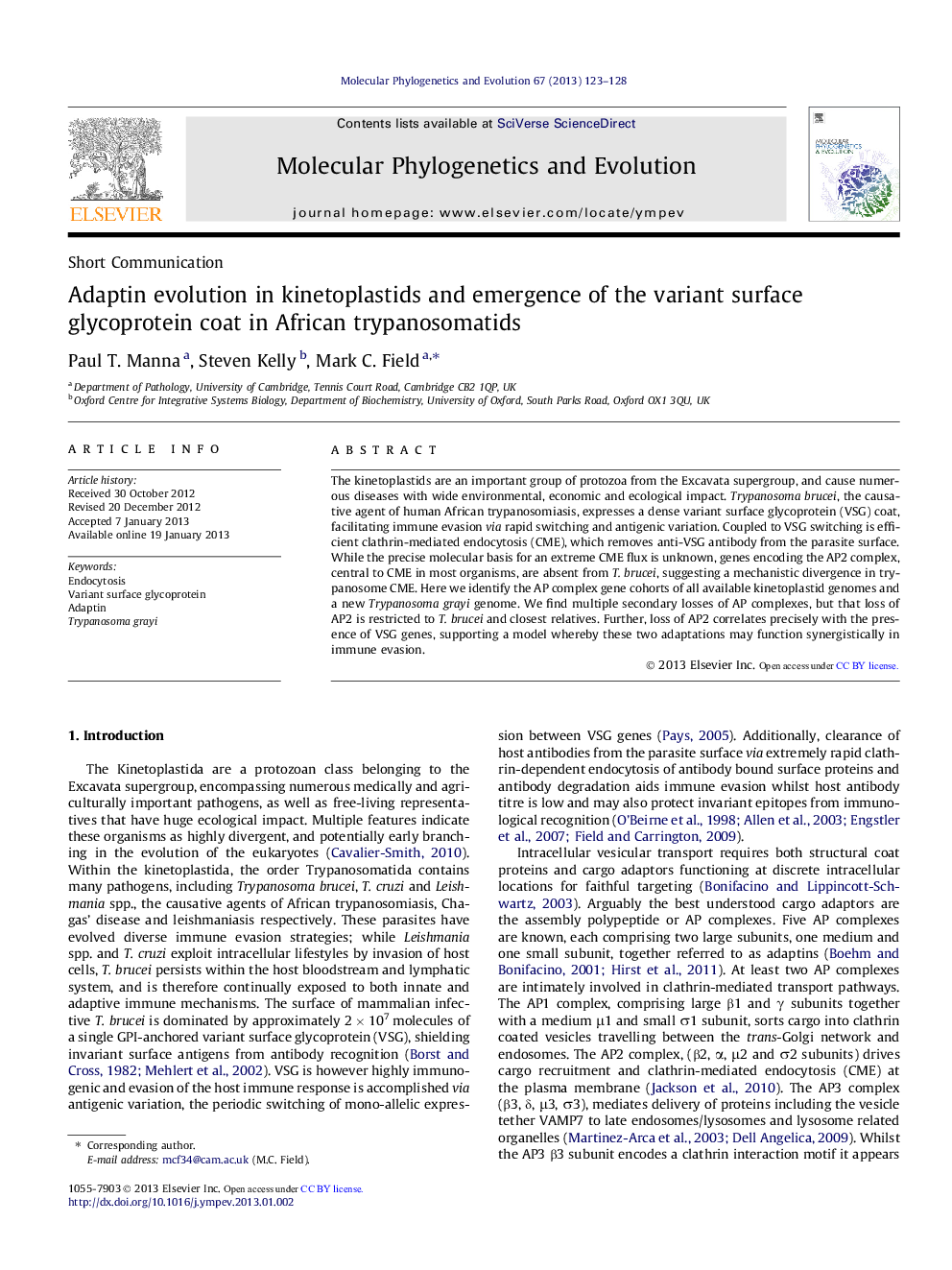| Article ID | Journal | Published Year | Pages | File Type |
|---|---|---|---|---|
| 5920209 | Molecular Phylogenetics and Evolution | 2013 | 6 Pages |
The kinetoplastids are an important group of protozoa from the Excavata supergroup, and cause numerous diseases with wide environmental, economic and ecological impact. Trypanosoma brucei, the causative agent of human African trypanosomiasis, expresses a dense variant surface glycoprotein (VSG) coat, facilitating immune evasion via rapid switching and antigenic variation. Coupled to VSG switching is efficient clathrin-mediated endocytosis (CME), which removes anti-VSG antibody from the parasite surface. While the precise molecular basis for an extreme CME flux is unknown, genes encoding the AP2 complex, central to CME in most organisms, are absent from T. brucei, suggesting a mechanistic divergence in trypanosome CME. Here we identify the AP complex gene cohorts of all available kinetoplastid genomes and a new Trypanosoma grayi genome. We find multiple secondary losses of AP complexes, but that loss of AP2 is restricted to T. brucei and closest relatives. Further, loss of AP2 correlates precisely with the presence of VSG genes, supporting a model whereby these two adaptations may function synergistically in immune evasion.
Graphical abstractDownload full-size imageHighlights⢠We identify the adaptin gene cohort from currently available kinetoplastid genomes. ⢠Further, we present analysis of newly sequenced Trypanosoma grayi adaptins. ⢠We describe the evolutionary history of kinetoplastid adaptins. ⢠Kinetoplastid adaptin cohorts are compared to major surface protein families. ⢠Adaptin evolution and immune evasion mechanisms are correlated in salivarian trypanosomes.
